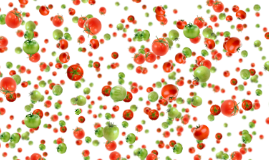
- 3D PARALLAX EFFECTS FROM STILLS HOW TO
- 3D PARALLAX EFFECTS FROM STILLS CODE
- 3D PARALLAX EFFECTS FROM STILLS PLUS
3D PARALLAX EFFECTS FROM STILLS CODE
So I opted to reset the translateZ only for Safari in this case (you can see the code here, not the nicest CSS I know sorry!). Resetting the translateZ does the trick, but then you lose the parallax that makes it feel a tiny bit nicer. A bit of a bummer (but also I get why it behaves that way). Because of the translateZ on the foreground layers, it won’t allow for the container to sit below the overlay. overlay īoth foreground layers are on the same parallax depth (that translateZ) so they move at the same rate and create the illusion of interacting with the background layer. A border-radius and box-shadow provide the viewport’s rounded rectangle shape. It uses linear-gradient (shown in the screenshot in red) to obscure the areas above and below the “viewport” and the inside is transparent (to show the background layer beneath). overlay container has a position: sticky so it stays fixed to the top even as its container scrolls. I keep adding sections and they create a long page you can scroll through like you would expect: Īnd is rendered like this (shown here with overlay and foreground hidden): The markup looks like this: Watch all 9 seasons of The Office four times through. The background layer is split into two halves, with the background artwork on the left and copy on the right. And finally the foreground includes the pieces of artwork that scroll on top of both previous layers.
3D PARALLAX EFFECTS FROM STILLS PLUS
The background layer includes the patterned backgrounds that show through the viewport layer plus the copy on the right. The overlay layer includes the rounded rectangle “viewport” on the left. The structure of the page can be simplified down to three main layers. So creative layering is the path I took to try and bring some additional interest to static visuals. You could technically have elements animating on a loop, but you wouldn’t be able to control when in the sequence someone might have it visible in their viewport.
3D PARALLAX EFFECTS FROM STILLS HOW TO
Elements can’t be told how to change they are effectively in one state forever. With CSS alone you can’t inform the page where you are with things like scroll position and triggers (not yet anyway). This time around I wanted to explore the idea of layers obscuring and revealing things to create different illusions and to experiment with scroll speeds. Sorry, your browser doesn’t support embedded videos. I started with a concept I used for a previous version of that utilized fixed positioning and z-index to create layered scrolling artwork. And since I’m me, I wanted to see what I could do with just CSS. As you know, a narrative-heavy website is just begging for some fun scrolling effects. The narrative portion of the site encourages folks to imagine what they could do with that time - whether it be small changes to daily routines or taking big swings. That’s a lot of time! And we hope folks can spend that time on things that matter to them. Turns out switching to Netlify saves development teams one day a week per developer. Parallax Photography: Creating 3D Cinematic Effects from Stills.Last week we launched a li’l project called Matterday.

Ke Colin Zheng, Alex Colburn, Aseem Agarwala, Maneesh Agrawala, Brian Curless, David Salesin, and Michael Cohen. We evaluate and demonstrate our approach on a wide variety of scenes and present a user study that compares our 3D cinematic effects to their 2D counterparts.

We describe a GPU-accelerated, temporally coherent rendering algorithm that allows users to create more complex camera moves interactively, while experimenting with effects such as focal length, depth of field, and selective, depth-based desaturation or brightening. We then optimize for a camera path that conforms to a cinematic convention, maximizes apparent parallax, and avoids missing information in the input. A face detector identifies subjects of interest. We present an automatic, content-aware approach to apply these cinematic conventions to an input light field. We develop a taxonomy of the cinematic conventions of these effects, distilled from observations of documentary film footage and organized by the number of subjects of interest in the scene. We present an approach to convert a small portion of a light field with extracted depth information into a cinematic effect with simulated, smooth camera motion that exhibits a sense of 3D parallax.

Parallax Photography: Creating 3D Cinematic Effects from Stills Parallax Photography: Creating 3D Cinematic Effects from Stills Ke Colin Zheng 1 Alex Colburn 1 Aseem Agarwala 2 Maneesh Agrawala 3 Brian Curless 1 David Salesin 1,2 Michael Cohen 4ġ University of Washington 2 Adobe 3 University of California, Berkeley 4 Microsoft Research


 0 kommentar(er)
0 kommentar(er)
